Pablo Picasso in Barcelona
Exploring the legacy of the 21st century’s greatest artist in Catalonia
By Duncan Rhodes
We examine the relationship between Pablo Picasso and Barcelona, from staging his first art exhibition in Els Quatre Gats cafe to helping establish the museum that bears his name. We also preview some guided walking tours that focus on the artist’s legacy here in Catalonia.
Biography of an Artist
Pablo Picasso was born in Malaga in the South of Spain in 1881, and spent most of his life in France, after moving to Paris in 1905; however it was in Barcelona that Spain’s greatest artist spent his formative years, and it was Barcelona, perhaps more than anywhere else, that Picasso considered his home.
The man who gave birth to the Cubism movement, and became the most famous and influential artist of the 20th Century, learned to sketch before he learned how to speak – thanks to his parents’ influence. Picasso’s father was a talented painter, as well as an art teacher, and his son picked up a pencil in his early years to begin a lifelong love of drawing, painting and art. Indeed such was the young Pablo’s talent that by the age of 13, the father judged his son to have surpassed him, prompting Picasso senior to give up painting.
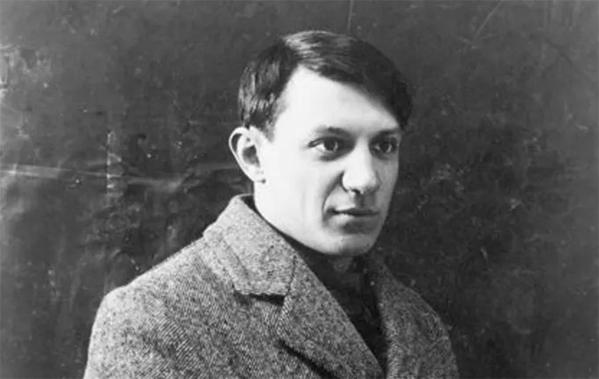
Picasso as a young man
Picasso’s early life was peripatetic: in 1891, at the age of 10, Picasso and his family moved to A Coruña in Galicia as his father was appointed teacher at the Guarda School of Fine Arts. Picasso himself was allowed to enrol a year later and so began his academic career.
Four years later, in 1895, the family moved again, this time east to Barcelona, with both father and son transferring to the Llotja School of Fine Arts as teacher and student respectively.
Barcelona had a profound effect on the teenage artist. The bustling industrialist Catalan capital was in a period of huge growth, embracing progressive ideas about art and society as it raced towards the 20th century.
Barcelona had a profound effect on the teenage artist. The bustling industrialist Catalan capital was in a period of huge growth, embracing progressive ideas about art and society as it raced towards the 20th century. The always prolific artist created thousands of sketches and paintings with the city as his muse, many of which can be seen at Barcelona’s Picasso Museum today.
Picasso’s new life in Barcelona was soon interrupted in 1897 by two years spent in Madrid, after his father requested he attend the San Fernando Academy of Fine Arts, considered the best in Spain. But by now the strong-willed youngster was already showing a dislike of formal studies and the 16-year-old rarely attended classes, preferring to stroll the corridors of El Prado Museum instead where he would spend hours studying the works of master painters such as Velazquez, Goya and El Greco. All played a major role in influencing Picasso’s work.
When Picasso returned to Barcelona in 1899, he drew a line under his academic career and his artistic career began in earnest. He began to frequent the, now famous, Els Quatre Gats (The Four Cats) cafe, where he would meet with other artists, and avant-garde thinkers (and drinkers) and became part of Barcelona’s Bohemian set. In 1900 he staged his first individual exhibition at the Cats. In the same year he made his first trip to Paris, for the Universal Exhibition, and was inspired by the avant garde works of Cezanne, Matisse, and the Fauvist movement which was taking place at the time.
Virtually all of the images he painted during the Blue Period, of friends, beggars, prostitutes and landscapes were inspired by Barcelona…
After a brief second stint in Madrid (where he illustrated the journal Arte Joven, a joint effort with Francesc d’Assis Soler which survived for just five issues), Picasso returned again to Barcelona and entered the period of artistic activity known as the Blue Period, his first departure from a more realistic style of painting. During this time, split between Paris and Spain, Picasso painted almost solely in blues tones creating a series of painting that were acutely sombre and mournful in tone, but exquisitely beautiful at the same time. Virtually all of the images he painted during the Blue Period, of friends, beggars, prostitutes and landscapes, were inspired by Barcelona, and thankfully the city’s Picasso Museum has a good selection from this time – such as the Blue Portait of Jaume Sabartés, Motherhood and Barcelona Rooftops.
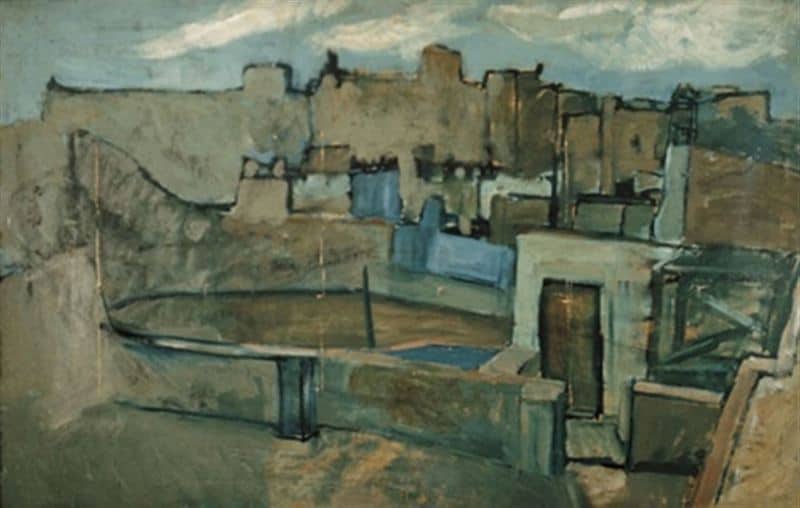
Barcelona Rooftops, painted in 1903
in 1905 Picasso left Barcelona, this time permanently, for Paris, but even so the city managed to influence the artist from afar. Indeed one of his seminal works, considered by many to be the very first example of Cubist painting was a depiction of prostitutes at a whorehouse on Carrer D’Avinyo, a street in Barcelona’s Barri Gotic (admittedly not the most salubrious association for a city to boast, but still…). Picasso referred to the painting as El Bordel (the Brothel), but was later dubbed the Les Demoiselles d’Avignon (the Ladies of D’Avinyo).
And although he never returned to Catalonia, or indeed Spain, to live, Picasso frequently visited Barcelona, often choosing to holiday with friends nearby on the coast, particularly in Cadaques, a beautiful fishing village on the Costa Brava. The reason he never came back permanently was down to politics… in 1939 Franco emerged victorious in the Spanish Civil War and Picasso swore never to set foot in Spain whilst the fascist dictator ruled the country. Sadly for Picasso – and Spain – Franco ruled until his death in 1975. Picasso died two years earlier in 1973, aged 91.
Picasso Museum, Barcelona
The Picasso Museum is standing tribute to the artist’s close relationship with the city of his adolescence and naturally the essential starting point for any fans wanting to explore the artist’s life and works. It opened in 1963 and was set up during his lifetime, according to his wishes, by his friend and personal secretary, Jaume Sabartés. The museum’s collection at that time was comprised of Sabartés’s personal collection along with Picasso’s works which he’d donated to the Barcelona Museums of Art. (Indeed when it first opened, the museum was called the Sabartes Collection, principally because Picasso was an outspoken critic of Franco and so it was impossible to open such a large public building under his name whilst the Fascist dictator still ruled). Later, after the death of Sabartes in 1968 and on several other occasions, Picasso donated a large number of works himself (and let’s not forget that Picasso once quipped: “I am the greatest collector of Picassos in the world”).
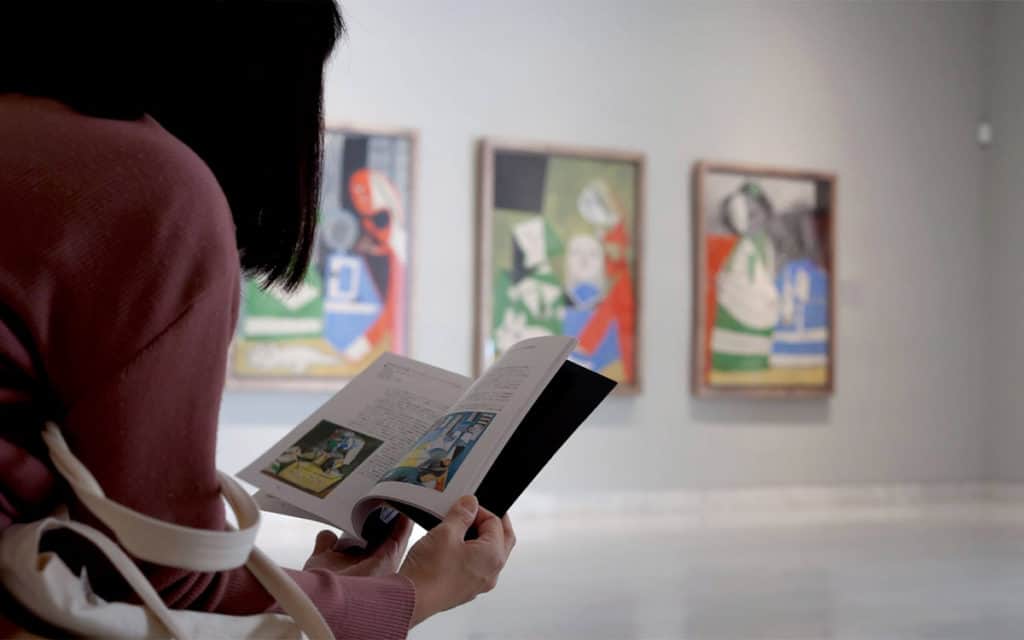
Check out our full review, info on opening hours and tickets. Art lovers might also want to consider purchasing The Barcelona Card, which grants free skip-the-line entry, as well as a host of other benefits (see more below).
C/Montcada 15-23
+34 93 2563000
www.museupicasso.bcn.cat
Free Entry: The Barcelona Card
If you fancy swanning into the museum with either paying or queuing, then consider purchasing Barcelona’s official tourist card. Aside from visiting Picasso, you also get free entry into 25 other museums and free use of public transportation. You can buy the Tourist Card securely via Get Your Guide.
Picasso’s Barcelona
Picasso had several apartments and studios when he was living and working in Barcelona, some of which have since been bulldozed over in the name of progress. Your best resource for key addresses is the excellent website of the Picasso Museum which has the authoritative chronology of Picasso in Barcelona here. You can’t visit any of his flats or workshops, but here are a couple of relevant stopping points on the Picasso trail for you to enjoy:
Els Quatre Gats
Opened in 1897, the Four Cats tavern was established by the Catalan artist Ramon Casas and his friend Pere Romeu (indeed the two men are the subject of the famous painting by Casas himself, ingeniously entitled Ramon Casas and Pere Romeu on a Tandem – you can see the original in the MNAC [see below], whilst a copy hangs in Els Quatre Gats). It was Barcelona’s answer to Paris’ famous Le Chat Noir cabaret and nightclub in Montmatre and a sounding board and meeting place for avant garde artists and writers to exchange ideas, normally over one too many glasses of wine. When Picasso rejected academic studies of art in 1899, returning from Madrid to Barcelona, he fell in with the forward thinking set that called The Four Cats their second home. Known as modernistes or decadentes, this community turned to French art nouveau, distinguished by sinuous contour lines, simplified shapes and pastel colours to move away from a realistic representation of the subjects of their art. Adopting their style, the young Picasso (yet to turn 20) sketched and painted numerous portraits of his friends from Els Quatre Gats – among them Carles Casagemas and Jaime Sabartès – and many of these works were included in his first solo exhibition, which opened at the tavern in February 1900.
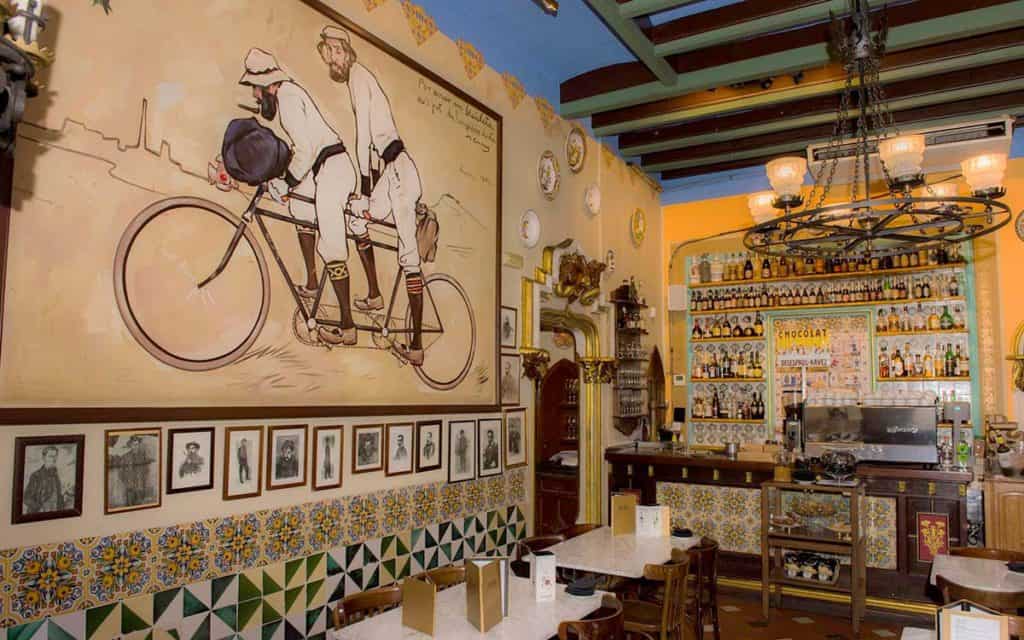
C/Montsio 3
Tel: +34 93 3024140
www.4gats.com
National Museum of Catalan Art
This treasure trove of art from antiquity to near-present only holds one work by Pablo Ruiz i Picasso, but it’s a good one: The Woman With Hat and Fur Coat, was painted in 1937 in Paris and is a prime example of ‘The Picasso style’ of Cubism, with a frontal and profile view merged into one image. As with the Picasso Museum, the MNAC is free to enter with the Barcelona Tourist Card, and is one of the city’s cultural highlights, featuring a wonderful collection of 20th century art in particular. You can find it towering above the Magic Fountain, on Montjuic mountain.
Parc de Montjuïc
Tel: +34 93 6220360
www.mnac.cat
Barcelona Design Museum
Intrigued by all forms of art, Picasso dabbled in ceramics as well as painting, drawing and sculpture, often to dazzling effect. Those with a penchant for pottery can check out a sixteen piece series of his, that has found its way into the Barcelona Design Museum’s collection (via the now defunct Ceramics Museum in Pedralbes). They are part of the museum’s “Extraordinaries!” permanent exhibition of decorative arts dating from the 3rd to 20th century. The building is also free to enter with the Barcelona Card.
Pl. de les Glòries Catalanes 37-38
Tel: +34 93 2566800
ajuntament.barcelona.cat/museudeldisseny
Top 3 Picasso Tours
1. Picasso Walking Tour & Museum Visit (€25)
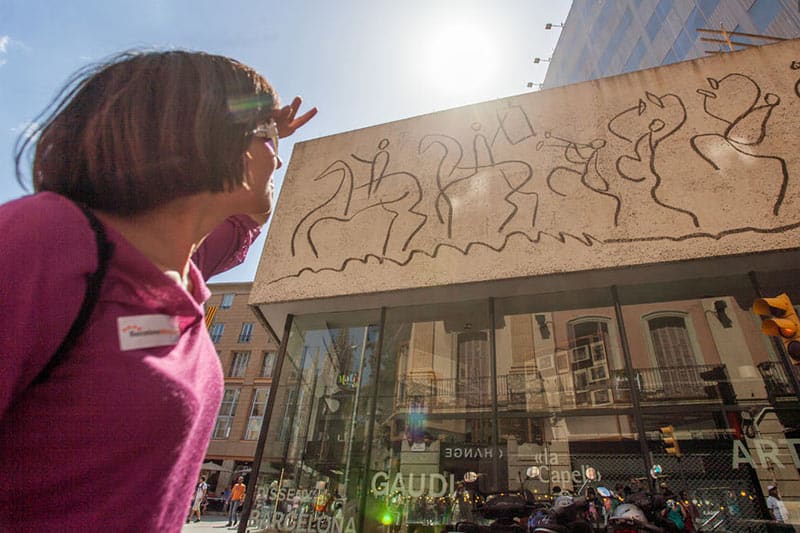
2. Picasso & Born District Walking Tour (€34)
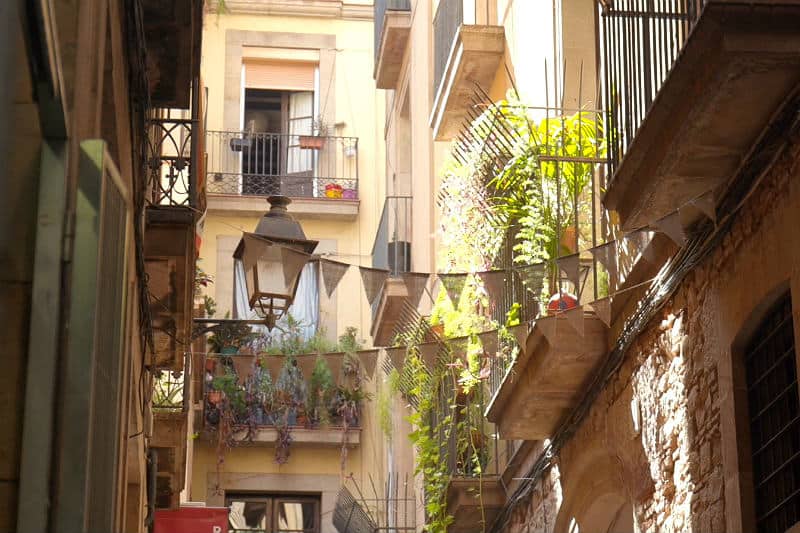
3. Private Picasso Tour (from €44 per person)
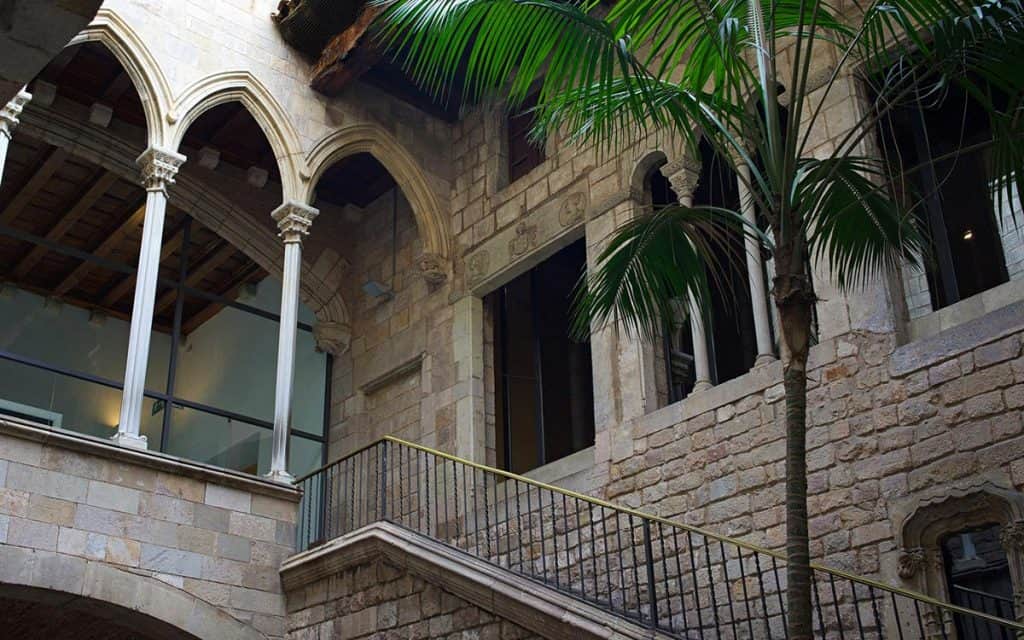
About the Author


